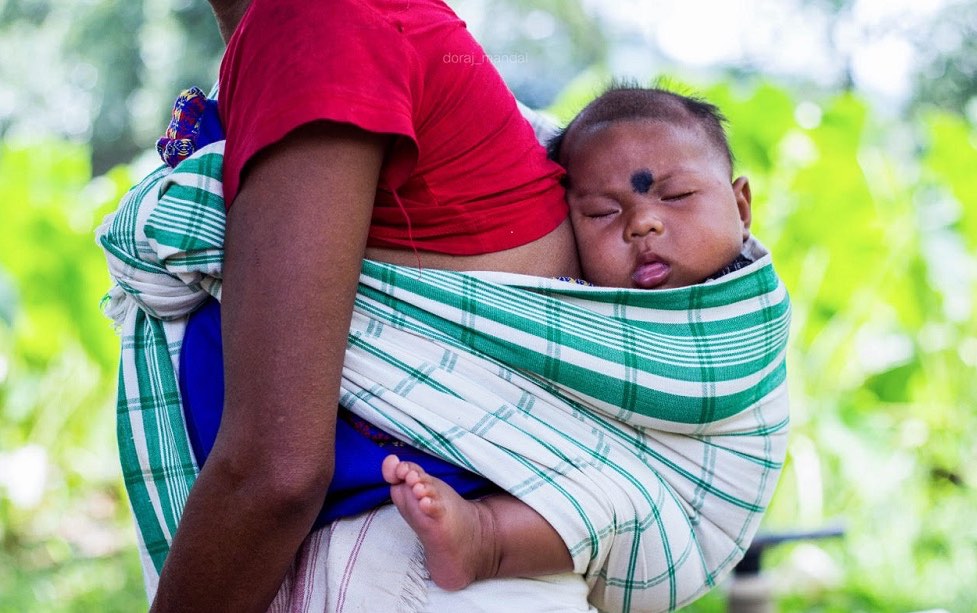India’s National Nutrition Mission, or POSHAN Abhiyaan, recognizes the multisectoral nature of the challenge of malnutrition and identifies “convergence” as one of its key pillars. It looks at convergence between different ministries and departments at the national, state, district, block and village levels. Conventionally, convergence in nutrition has been understood as the provision of a common platform for different organizations and stakeholders to come together and ensure better coordination. “Effective convergence,” however, is the successful reach of nutrition-related programs from relevant sectors to address the key determinants of poor nutrition for the same household, same woman, and same child in the first 1,000 days from conception until the child’s second birthday.
In a recent commentary in the Economic & Political Weekly, a group of researchers from IFPRI and NITI Aayog illustrate how data on co-coverage of interventions can be used to plan for and assess the success of efforts to strengthen effective convergence.
Using cross-sectional data from 1,417 households, predominantly from Scheduled Tribe/ Scheduled Caste areas in Chhattisgarh, Jharkhand, Madhya Pradesh, Odisha, and West Bengal, indicators were created for the coverage of 13 nutrition-specific and 6 nutrition-sensitive interventions relevant to women and children in the 1,000-day period.
Nutrition-specific interventions target the immediate causes of undernutrition, whereas nutrition-sensitive interventions address the key underlying determinants of nutrition and enhance the coverage and effectiveness of nutrition-specific interventions. For each of three co-coverage indicators—one for nutrition-specific, one for nutrition-sensitive, and a combined indicator—the extent to which all interventions were received by households was examined.
On average, households received 8 of 13 nutrition-specific and 4 of 6 nutrition-sensitive interventions. Only 23 of 1,417 households (1.6%) received all 13 nutrition-specific interventions, and only 5.6% received all 6 nutrition-sensitive interventions. Overall, there was high coverage for a few interventions, but very low convergence when considering the co-coverage of all interventions together. Only two of 1,417 households (0.1%) received all 19 interventions.
These findings illustrate the poor state of effective convergence in India today. This study highlights the power of data to inform the reach of multiple convergent interventions. Data on reach of convergent interventions and on reach of individual interventions can and should be routinely examined to diagnose gaps that need to be closed to strengthen effective convergence. For instance, the study findings on nutrition-specific interventions highlight that low co-coverage is in large part attributable to inadequate postnatal health check-ups as well as low child IFA supplementation, deworming, vitamin A supplementation, and weight measurement. Limited access to improved toilet facilities and low self-help group membership contribute to low co-coverage of nutrition-sensitive interventions.
The main policy implications of this empirical analysis are as follows:
- Data on effective convergence (as defined in the outcome of co-coverage), in addition to tracking convergence planning processes, should shape the goals, planning, and monitoring for the “convergence” pillar of India’s nutrition strategy. A focus on social equity is important, especially because the interventions related to basic healthcare and sanitation are intended “for all.”
- Stakeholders need to identify ways to facilitate convergence through existing programmatic coordination mechanisms within states and without creating new structures and burdening existing departmental staff with activities for coordination.
The success of POSHAN Abhiyaan’s convergent action planning efforts will lie in the ability of the convergence-related processes to trigger the within- and across-sector actions that lead to effective reach of an agreed upon core set of interventions to all households in the 1,000-day period. Convergence can only be deemed successful when all interventions reach all target households in the right timeframes.
Purnima Menon is a Senior Research Fellow with IFPRI’s Poverty, Health and Nutrition Division (PHND); Rasmi Avula and Samuel Scott are PHND Research Fellows; Shinjini Pandey is a Research Analyst. They are based in IFPRI’s South Asia Office in New Delhi. Alok Kumar is the Health and Nutrition Advisor at NITI Aayog. This post also appears on Outlook POSHAN.
To get a PDF of the E&PW article on which this post is based, write to us at POSHAN@cgiar.org.







